Sometimes, seeing more just means more questions
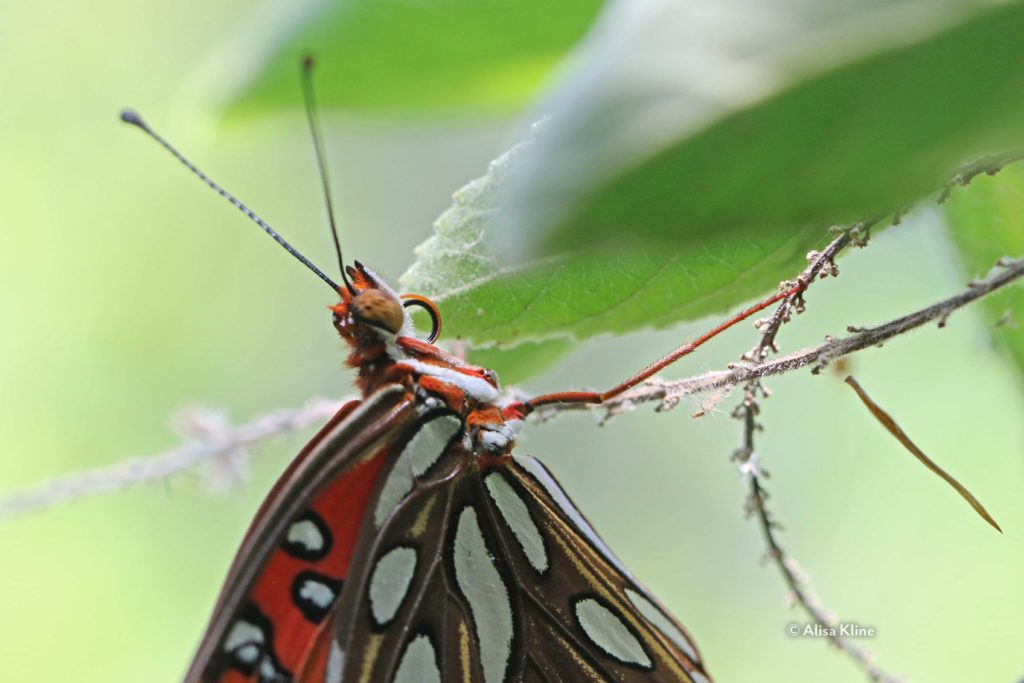 The closer you look at something, the more questions you develop. And I have a new lens that lets us look very closely indeed.
The closer you look at something, the more questions you develop. And I have a new lens that lets us look very closely indeed.
For example, the photo at the top of this post. It is a butterfly known as a gulf fritillary. It is one of the more common butterflies in Houston, but that is to take nothing from it. I encountered this particular lady (I believe it is a female) a few days ago. I think she had just emerged from her chrysalis. I think this because she looked immaculate (that new butterfly smell), and she took no action no matter how close I placed the camera to her. Butterflies don’t let you do that over and over again. But she did.
Fritillaries emerge from a small chrysalis maybe the size of your first two pinky joints. How, you might ask, do those wings fit into such a tiny package? A butterfly wing is very much like a kite. Without the stiffening of some wood or plastic, a kite just a limp piece of cloth. The stiffeners for the butterfly are the veins you can see as slight ridges on the wings. You can see them really clearly in the wing photo below. When the butterfly first emerges from the chrysalis, the veins are empty and the wings are crumpled. Upon emergence, their first job is to pump liquid from their belly into their wings. This stiffens the wings and readies them for flight. There are other tasks to complete before the newly emerged butterfly is ready to go.
During these first hours of their existence, butterflies are uniquely vulnerable. They cannot fly yet and they lack defenses. I tried not to exploit her moment of vulnerability too much, but to have a butterfly, a living butterfly, hold still for that long is not an opportunity that comes along all that often.
So, automatic blog post! Hooray for the writer, this one’s going to write itself. Except for that coil under her mouth.
I know what it is. It is her proboscis. She will use this to siphon up nectar from flowers. She can uncoil it to reach deep into flowers. The photo below is another gulf fritillary with her proboscis extended. Notice that it isn’t in two pieces when it’s being used. That’s because the two parts have fused.
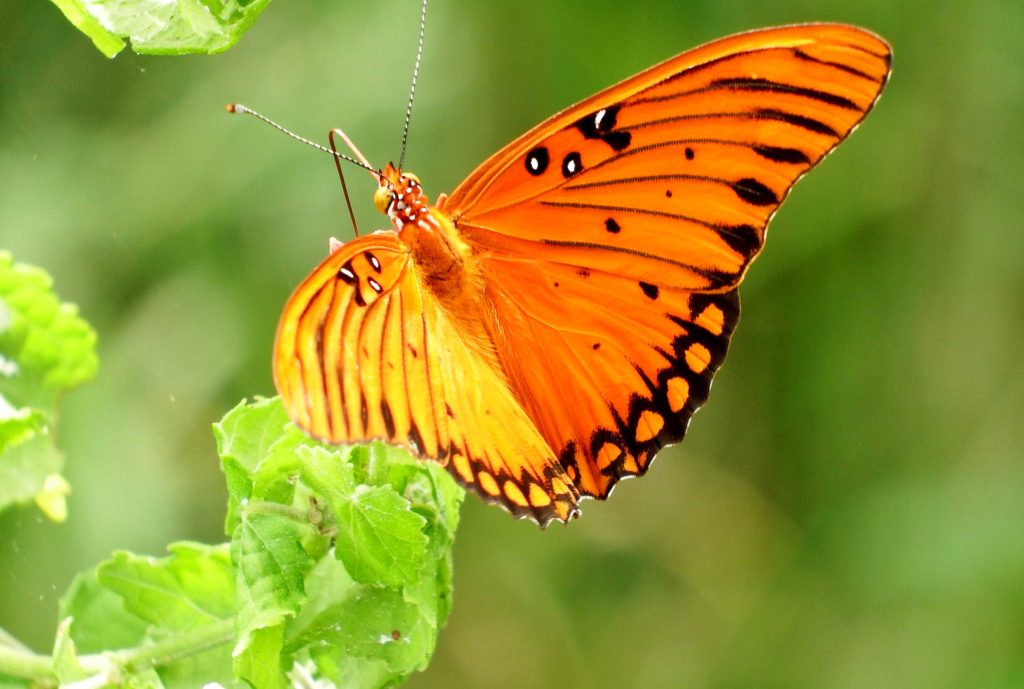
This gulf frit is using his proboscis to drink from a turk’s cap. Notice that it is all one piece.
Fusing their proboscis is something that butterflies do upon emerging. The proboscis begins as two adapted mouth parts each with velcro-like protrusions; once the butterfly emerges they zip up their straw and set off to find a mate. Only the straw on this frit is open at the top. A straw with a gap is not a straw. It is a sieve. You can see the problem more clearly in the photo below.
A butterfly will keep coiled their proboscis coiled under their heads until they want to sip some nectar. They increase fluid pressure in the coil to unroll it and they can manipulate it inside a flower, searching for the sweet drops. Butterflies pull liquid into their mouths both by sucking and through capillary action.
I have spent almost the entire day trying to figure out if I have taken a photograph of the proboscis before it is fused, that has failed to fuse, or perhaps is in the process of fusing. I still don’t know, but I did find a great site for the natural world that can tell you more than even I want to know on this topic. https://infinitespider.com/butterfly-proboscis-straw-sponge/
I have identified those adorable white fluffy “ears” that are standing up right above that proboscis. They are labial palps. She will use them to feel around to find food and to manipulate the environment to help her eat. They are tiny mouth pushers. An extra set of hands, since her feet are all busy hanging on. Most of the time, they aren’t kept erect like this, but this is cuter.
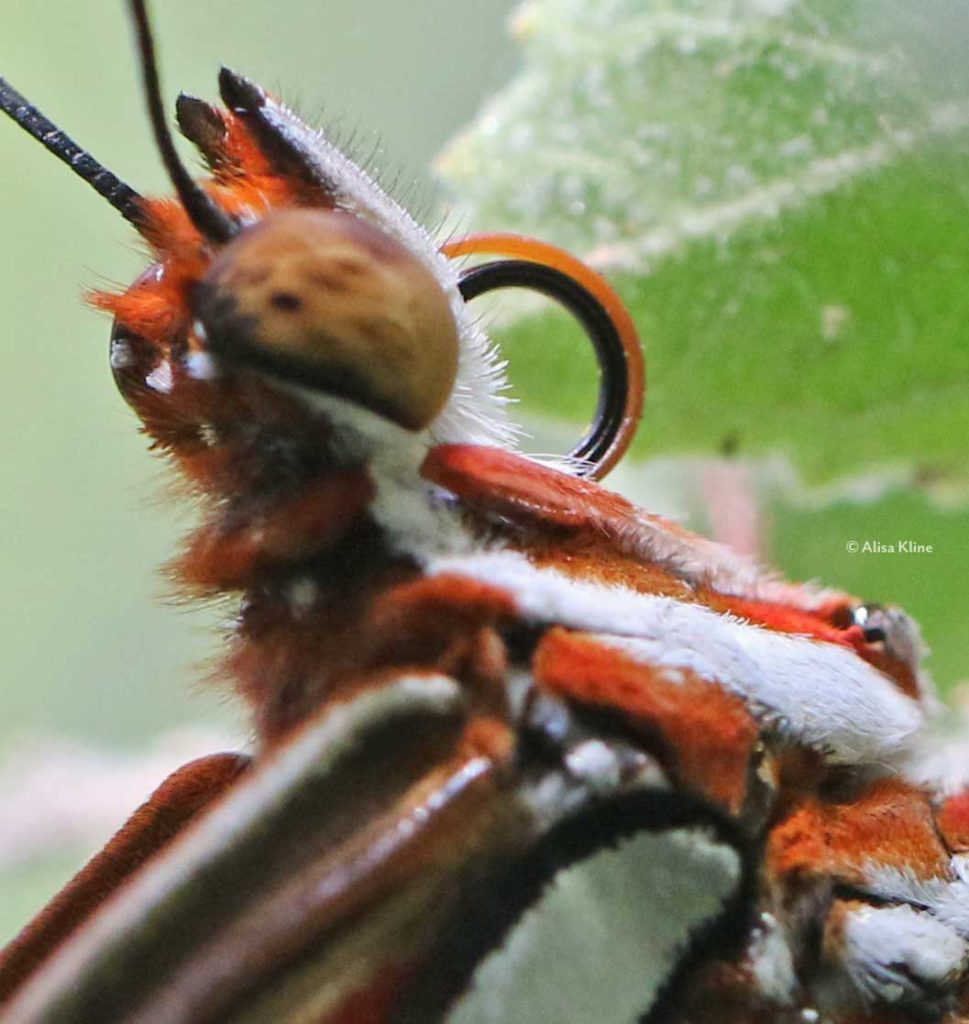
That proboscis is most certainly not fused yet, and those labial palps are so fuzzy!
Since she was so wildly cooperative, I also looked closely at her wings. Butterfly wings are made of chitin on top of which, are tiny, overlapping scales. These scales help the butterfly soak up heat and improve flight dynamics, but most important of all, they provide the butterfly with color.
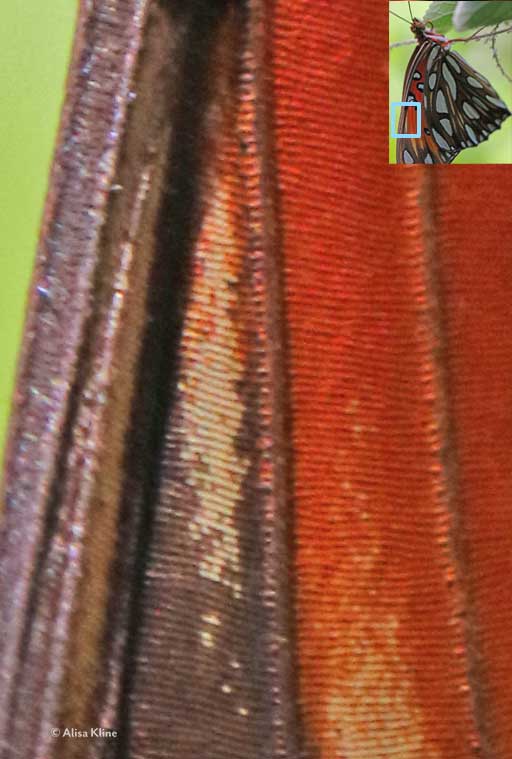
You can see the individual scales in the wing and you can see the veins that the butterfly uses to stiffen their wings.
There are two mechanisms through which butterfly scales produce intense colors. The first is pigment. This is just like paint. The scale simply is a certain color. The more interesting is the second mechanism. Refraction. Scales that gain color from refraction actually bend light like a prism. Each refractive scale has air trapped inside and a variety of surfaces that can bend light. Refractive scales can be layered upon pigmented scales and the result is, well, a butterfly! On the gulf frit, the most likely scales to use refractive properties are the silvery spots on the underwing. None of these photos capture the metallic shine of those spots, but you can’t miss them if you see a gulf frit in the wild.
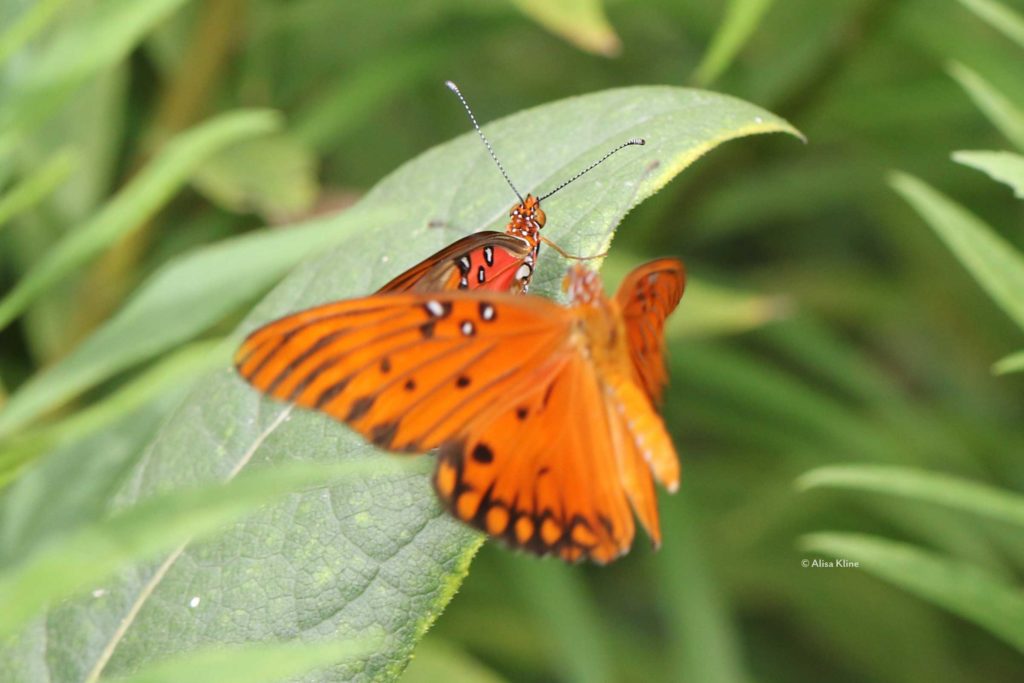
I think that is our brand-new female on the leaf. Gulf frits will live only a week or two and during that time, their colors fade and their wings get frayed. The first day or two, they really look different, especially the darker girls. The hovering butterfly is undoubtedly a male beating his wings above her to shower her with his pheromones. They are produced by specialized scales on his wings.
Since the preserve is rather small (about a half acre), it is not uncommon to run into the same butterfly again and again. I think I ran into her again in the wee pocket prairie. She had drawn the attention of two males who were fluttering above her (okay, they were dive bombing her) releasing what they considered to be an irresistible pheromone. The pheromone is made by specially adapted wing scales. Their frantic flapping in her direction is designed to overwhelm her with their scent. From what I observed, she was not impressed.
The reason the preserve is awash in gulf fritillary butterflies is that we grow passion vine. That is the host plant for gulf fritillary butterflies. If you really want to fill your yard with butterflies, don’t forget to plant the host plants their caterpillars require to grow. I would show you a photo of the plant, but by this time in the season, there aren’t many unchewed leaves left.
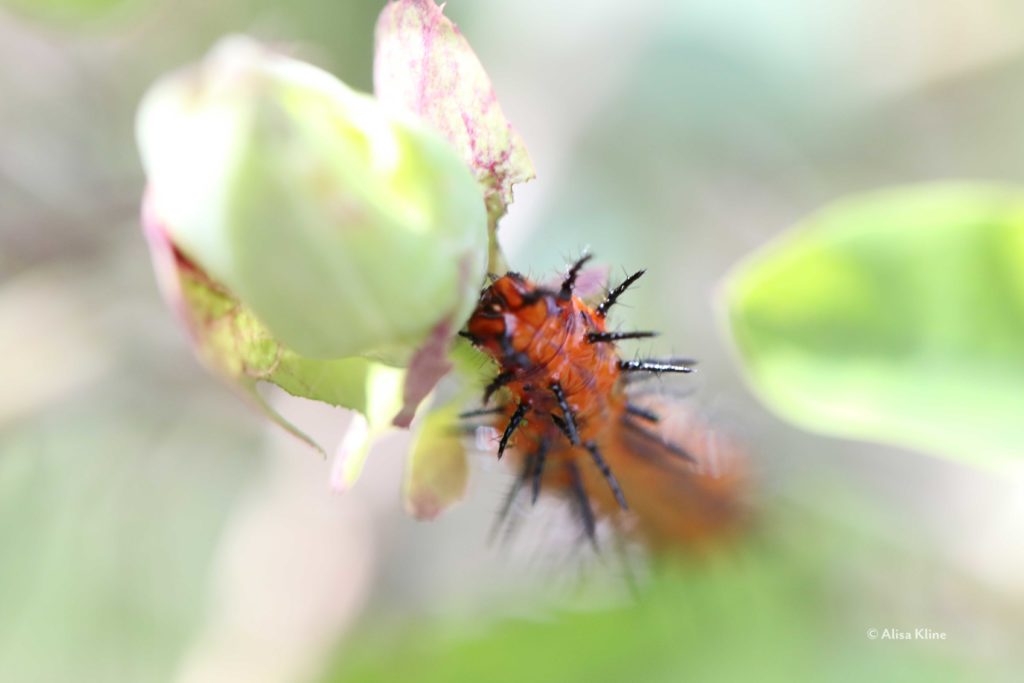
This gulf frit caterpillar has chewed through most of this passion vine leaf. Those spikes, btw, are completely harmless and softer than your toothbrush bristles.

